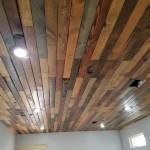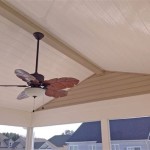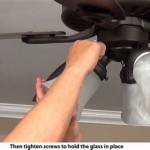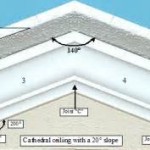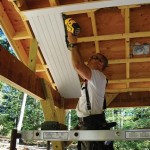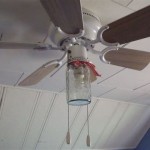Everything You Need To Know About Plug-In Ceiling Lamps in Germany
Plug-in ceiling lamps offer a flexible lighting solution, particularly appealing in German homes where rental agreements often restrict permanent structural modifications. These lamps circumvent the need for complex wiring, relying instead on a standard power outlet. Selecting the right plug-in ceiling lamp requires careful consideration of factors such as design aesthetics, light output, energy efficiency, and adherence to German electrical standards. This article provides a comprehensive overview of plug-in ceiling lamps in the German market, covering various aspects from selection criteria to installation guidelines.
Understanding the Appeal of Plug-In Ceiling Lamps in Germany
The popularity of plug-in ceiling lamps in Germany stems from several key advantages. Firstly, they are ideal for renters. German rental laws often prohibit significant alterations to the property, including extensive electrical work. Plug-in lamps offer a workaround, providing overhead lighting without requiring a qualified electrician or the landlord's explicit permission for wiring changes. This is particularly beneficial in older buildings where existing wiring may be outdated or insufficient for modern lighting needs.
Secondly, plug-in lamps offer flexibility and adaptability. They can be easily relocated as furniture arrangements change or when moving to a new residence. This portability is a significant advantage over hardwired fixtures. The ease of installation is another compelling factor. Unlike traditional ceiling lights, plug-in models require minimal installation effort, typically involving simply mounting the fixture to the ceiling and plugging it into a nearby electrical outlet. This reduces both the cost and inconvenience associated with professional installation.
Finally, plug-in ceiling lamps offer a diverse range of design options. Available in various styles, from minimalist modern to ornate traditional designs, they can complement any interior décor. This variety ensures that consumers can find a plug-in lamp that not only provides adequate lighting but also enhances the overall aesthetic of their living space. The convenience, flexibility, and design diversity contribute significantly to the widespread adoption of these lighting solutions in German households.
Key Considerations When Choosing a Plug-In Ceiling Lamp
Selecting the appropriate plug-in ceiling lamp requires careful evaluation of several factors. Light output, measured in lumens, is a crucial consideration. The required lumen output depends on the size and function of the room. For example, a living room will require more lumens than a hallway. It's important to consult lighting guides or seek advice from lighting specialists to determine the optimal lumen output for a given space. Color temperature, measured in Kelvin (K), also plays a significant role. Warmer color temperatures (around 2700K-3000K) create a cozy and inviting atmosphere, suitable for bedrooms and living rooms, while cooler color temperatures (around 4000K-5000K) offer brighter, more stimulating light, ideal for kitchens and offices.
Energy efficiency is another critical factor, particularly given rising energy costs in Germany. LED (Light Emitting Diode) lamps are generally the most energy-efficient option, consuming significantly less power than traditional incandescent or halogen bulbs. Look for lamps with high energy efficiency ratings (e.g., A++, A+) to minimize energy consumption and reduce electricity bills. The design and style of the lamp should complement the existing interior décor. Consider the overall aesthetic of the room and choose a lamp that blends seamlessly with the furniture, wall colors, and other design elements.
Furthermore, the material and build quality of the lamp are essential for longevity and safety. Opt for lamps made from durable materials, such as metal or high-quality plastics, that can withstand everyday wear and tear. The lamp should also be properly grounded and insulated to prevent electrical hazards. Finally, ensure the lamp complies with German electrical safety standards, such as the VDE (Verband der Elektrotechnik Elektronik Informationstechnik) certification. This certification indicates that the lamp has been tested and meets stringent safety requirements.
Installation and Safety Guidelines for Plug-In Ceiling Lamps in Germany
While plug-in ceiling lamps are generally easy to install, adhering to safety guidelines is paramount. Before commencing any installation, ensure the power supply is switched off at the circuit breaker. This prevents the risk of electric shock. Carefully follow the manufacturer's instructions for mounting the lamp to the ceiling. Use appropriate screws and anchors that are suitable for the ceiling material (e.g., concrete, plasterboard). If unsure about the ceiling's structural integrity, consult a professional.
Ensure the lamp's cord is long enough to reach the nearest electrical outlet without creating undue strain. Avoid using extension cords whenever possible, as they can pose a fire hazard. If an extension cord is unavoidable, choose a heavy-duty cord with a sufficient amperage rating. Secure the cord neatly along the wall or ceiling using cable clips or conduits to prevent tripping hazards and maintain a tidy appearance. Do not overload the electrical circuit. Check the amperage rating of the circuit and ensure that the combined wattage of all devices plugged into the circuit does not exceed the maximum limit.
Regularly inspect the lamp for any signs of damage, such as frayed cords or loose connections. If any damage is detected, discontinue use immediately and have the lamp repaired by a qualified electrician. Keep the lamp clean and free from dust to prevent overheating. Use a soft, dry cloth to wipe the lamp regularly. Avoid using harsh chemicals or abrasive cleaners, as they can damage the lamp's finish. It's also vital to be aware of the specific regulations pertaining to lighting fixtures in rented properties. While plug-in lamps are generally acceptable, some landlords may have specific requirements or restrictions. It's prudent to consult with the landlord before installing any lighting fixtures to avoid potential conflicts.
Exploring Different Types of Plug-In Ceiling Lamps
The market offers a wide array of plug-in ceiling lamps, catering to diverse needs and preferences. Pendant lights are a popular choice, offering a stylish and versatile lighting solution. They typically consist of a single light fixture suspended from the ceiling by a cord or chain. Pendant lights are available in various styles, from minimalist designs to elaborate chandeliers. They are ideal for illuminating dining tables, kitchen islands, or living room focal points.
Flush mount ceiling lights are another common option, providing a low-profile lighting solution that is suitable for rooms with low ceilings. These lamps are mounted directly to the ceiling, minimizing the amount of space they occupy. Flush mount lights are available in various sizes and shapes, from round and square to rectangular and oval. They are often used in hallways, bedrooms, and bathrooms.
Track lighting systems offer a flexible and customizable lighting solution. These systems consist of multiple light fixtures mounted on a track that is attached to the ceiling. The light fixtures can be individually adjusted to direct light where it is needed most. Track lighting is ideal for highlighting artwork, architectural features, or specific areas within a room. Spotlights provide focused illumination, making them ideal for accent lighting or task lighting. They can be used to highlight artwork, plants, or other decorative elements. Spotlights are available in various styles, from recessed models to surface-mounted options. Furthermore, smart lighting options are increasingly common. These lamps can be controlled remotely via a smartphone or voice assistant, allowing users to adjust the brightness, color temperature, and even turn the lamp on or off from anywhere. Smart lighting offers convenience and energy savings, making it an attractive option for tech-savvy consumers.
Navigating the German Market for Plug-In Ceiling Lamps
The German market offers a wide range of retailers selling plug-in ceiling lamps, from large home improvement stores to specialized lighting shops and online retailers. Major home improvement stores such as Bauhaus, Obi, and Hornbach carry a wide selection of plug-in lamps in various styles and price ranges. These stores often offer knowledgeable staff who can provide advice and assistance in selecting the appropriate lamp. Specialized lighting shops, such as Lampenwelt and Westwing, offer a more curated selection of high-quality lamps, often with a focus on design and style. These shops may also offer professional lighting design services to help customers create the perfect lighting scheme for their homes.
Online retailers, such as Amazon, eBay, and Otto, offer a vast selection of plug-in lamps from various manufacturers and suppliers. Online shopping allows consumers to compare prices and read reviews from other customers, making it easier to find the best deal. However, it's important to carefully review the product specifications and ensure that the lamp complies with German electrical safety standards before making a purchase.
When purchasing a plug-in ceiling lamp in Germany, be aware of the various labels and certifications that indicate compliance with industry standards. The VDE (Verband der Elektrotechnik Elektronik Informationstechnik) certification is a widely recognized mark of electrical safety in Germany. Lamps bearing the VDE mark have been tested and meet stringent safety requirements. The CE (Conformité Européenne) mark indicates that the lamp complies with European Union directives related to health, safety, and environmental protection. The Energy Efficiency Label provides information about the lamp's energy consumption, allowing consumers to compare the energy efficiency of different models. By considering these factors and shopping at reputable retailers, consumers can ensure that they purchase a high-quality, safe, and energy-efficient plug-in ceiling lamp that meets their specific needs and preferences in the German market.

German Ceiling Lamp With Tinted Glass Shade And Brass Mount 1920s Chairish

Vintage German Art Deco Ceiling Lamp 1920s Chairish

Antique German Ceiling Lamp With Opaque White Glass Shade 1920s For At Pamono

Vintage German Ceiling Lamp 1970s Chairish

German Ceiling Lamp In Ceramic And Glass 1920s Chairish

German Space Age Glass Ball Pendant Lamp 1970s For At Pamono

Mid Century Industrial German Ceiling Lamp Chairish

Vintage German Yellow Glass Ceiling Lamp 1950s Chairish

German Space Age Glass Ball Pendant Lamp 1970s For At Pamono

Vintage German Ceiling Lamp With Chrome Plated Frame 1960s Chairish
Related Posts

